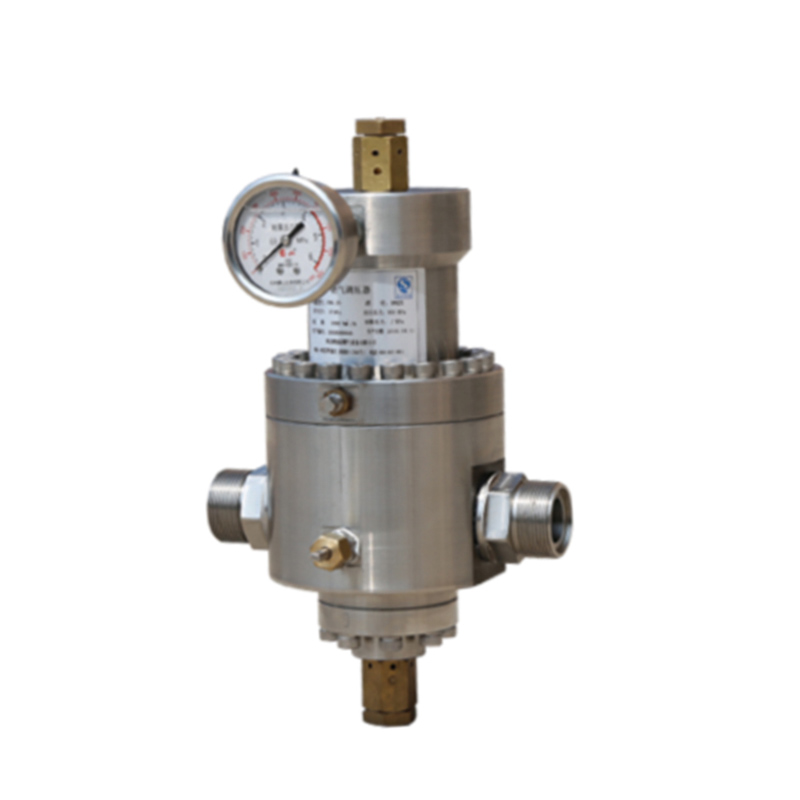
Nov . 09, 2024 14:44
Back to list
Design and Functionality of Pressure Regulation Skids in Industrial Applications
Understanding Pressure Regulating Skid An Innovative Solution for Fluid Control
In various industrial applications, managing pressure is critical for both safety and efficiency. One innovative solution that has gained traction in recent years is the pressure regulating skid. This modular system provides a comprehensive approach to controlling fluid pressures, ensuring optimal performance in a wide range of processes.
What is a Pressure Regulating Skid?
A pressure regulating skid is an assembled unit designed to manage the pressure of fluids within a system. Typically, it comprises various components, including pressure regulators, valves, piping, sensors, and control systems. The skid is designed to integrate seamlessly into existing infrastructures, providing a ready-to-use solution that minimizes the need for extensive modifications.
The primary function of a pressure regulating skid is to maintain a consistent output pressure, regardless of fluctuations in the input pressure. This is particularly crucial in applications where pressure variations can lead to equipment damage, inefficient operations, or even hazardous situations.
Key Components of a Pressure Regulating Skid
1. Pressure Regulators These devices automatically adjust the flow of fluid to maintain the desired pressure. They respond to changes in the system by either increasing or decreasing pressure, ensuring that processes remain stable.
2. Valves Integral to the skid’s operation, valves control the direction and flow rate of the fluid. They can be manually or automatically operated, depending on the application's requirements.
3. Piping The skid is equipped with piping that connects all the components. The design of the piping system is crucial, as it must withstand the operating pressures and ensure efficient fluid transit.
4. Sensors and Instrumentation Sensors monitor pressure, flow rate, and temperature. This real-time data is essential for effective control and helps operators make informed decisions.
5. Control Systems Advanced control systems, often featuring programmable logic controllers (PLC), allow for automated management of the skid's components. They can trigger alarms and shut down the system in emergency situations, enhancing safety.
pressure regulating skid

Benefits of Using a Pressure Regulating Skid
1. Enhanced Efficiency By maintaining a stable pressure, these skids optimize operational processes, leading to reduced downtime and improved productivity.
2. Cost-Effectiveness Although the initial investment may seem significant, the long-term operational savings—through reduced maintenance and improved efficiency—often far outweigh the costs.
3. Safety Improvements The ability to automatically regulate pressure minimizes the risk of accidents caused by pressure surges or drops, thereby safeguarding equipment and personnel.
4. Flexibility and Scalability Pressure regulating skids can be customized to meet specific requirements and can easily be scaled up or down as operational needs change.
5. Integration with Existing Systems Their modular design allows for easy integration into pre-existing systems, making them a practical choice for upgrading facilities without a complete overhaul.
Applications of Pressure Regulating Skids
Pressure regulating skids are used across various industries, including oil and gas, water treatment, pharmaceuticals, and manufacturing. In the oil and gas sector, they manage the pressure of natural gas throughout extraction and distribution, ensuring safe and efficient operations. In water treatment facilities, they regulate water pressure to ensure consistent flow rates and treatment efficiencies.
Conclusion
In summary, pressure regulating skids represent a revolutionary approach to fluid pressure management. Their integration into industrial processes can lead to significant improvements in efficiency, safety, and overall operational costs. As industries continue to seek innovative solutions to meet increasing demands and regulatory requirements, the role of pressure regulating skids will only grow in importance, setting the stage for a more efficient and safer future in fluid control.
Latest news
-
Safety Valve Spring-Loaded Design Overpressure ProtectionNewsJul.25,2025
-
Precision Voltage Regulator AC5 Accuracy Grade PerformanceNewsJul.25,2025
-
Natural Gas Pressure Regulating Skid Industrial Pipeline ApplicationsNewsJul.25,2025
-
Natural Gas Filter Stainless Steel Mesh Element DesignNewsJul.25,2025
-
Gas Pressure Regulator Valve Direct-Acting Spring-Loaded DesignNewsJul.25,2025
-
Decompression Equipment Multi-Stage Heat Exchange System DesignNewsJul.25,2025

